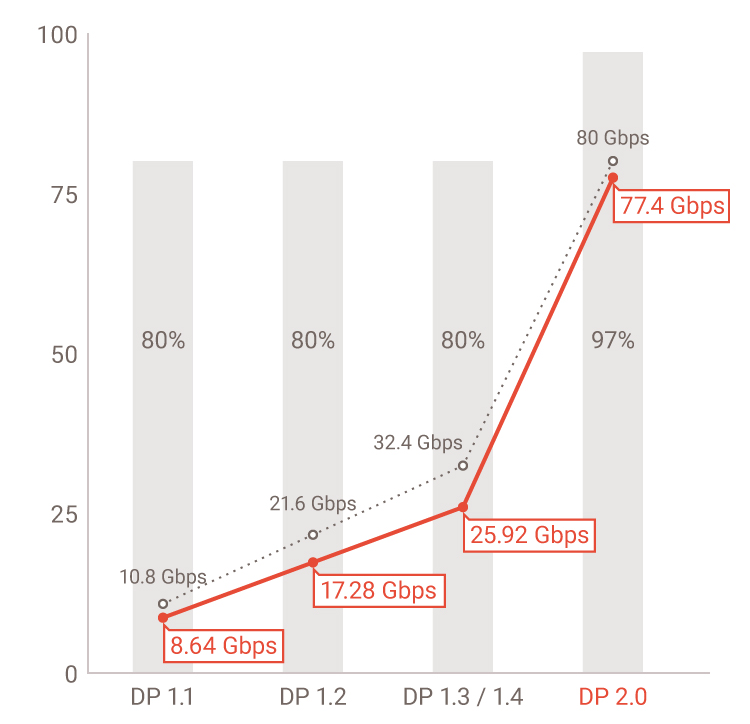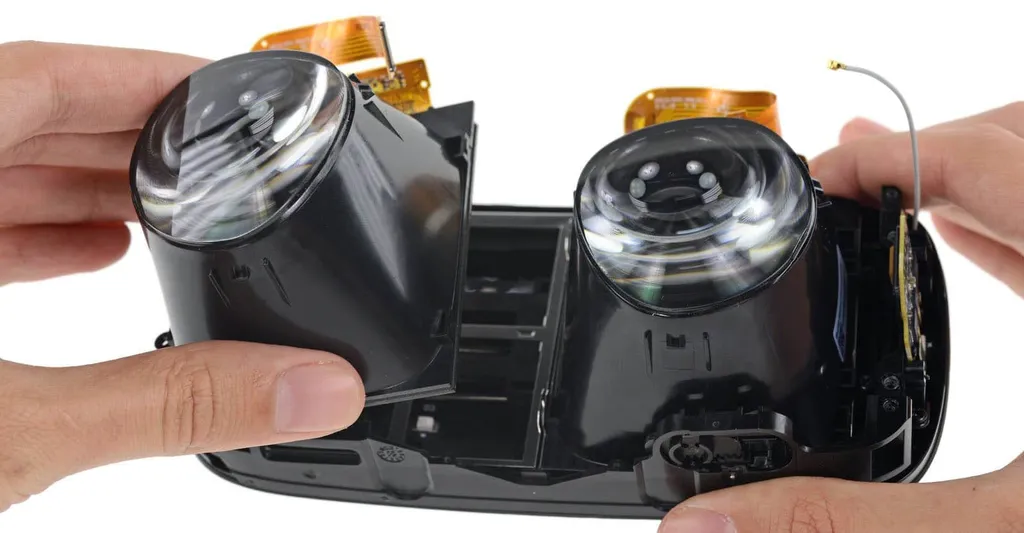The Video Electronics Standards Association this week released the spec for DisplayPort 2.0, the next generation royalty-free video cable standard.
DisplayPort 2.0 provides a 3x increase in total bandwidth compared to the previous DisplayPort 1.4a. This means the max payload bandwidth increased from 25.92 Gbps to 77.37 Gbps.

Diagram from VESA
Among the potential use cases of the new standard, VESA lists:
Two 4Kx4K (4096×4096) displays (for AR/VR headsets) @120Hz and 30 bpp 4:4:4 HDR (with DSC)
VESA claims the first products with DisplayPort 2.0 will ship by late 2020.
DisplayPort Today
On the market today, the Oculus Rift S and Valve Index use DisplayPort 1.2 to drive total resolutions of 2560×1440 and 2800×1600 respectively. DisplayPort 1.2 was introduced all the way back in 2010, but is still used today because it provides higher bandwidth than standard HDMI at a reasonable cost.
The HP Reverb and Acer ConceptD OJO use DisplayPort 1.3 to drive their total resolutions of 4320×4320, since 1.2 doesn’t provide sufficient bandwidth.
Due to the decision to use DisplayPort, these recent headsets won’t work on laptops with only HDMI.
Foveated Rendering?
Of course, a 4K per eye headset might not require a 4K per eye display stream. Instead, if such a headset used foveated rendering (and it would need to given the huge number of pixels) it could send the high resolution foveal area separately to the low resolution background. In this way, a less expensive version of DisplayPort with a wider install base of supporting graphics cards could be used.
However, at Oculus Connect 5 Facebook showed off research on a foveated rendering system which uses a deep neural network to reconstruct the pixel detail. The company’s Michael Abrash claimed this could lead to a 20x reduction in rendered pixels. However, the reconstructed pixels may need to be sent at full resolution in order to not be noticeable.
But even if DisplayPort 2.0 isn’t used for the next generation of VR headsets, it may lay a foundation for VR headsets further in the future to drive foveal resolutions we can only dream of today.





























